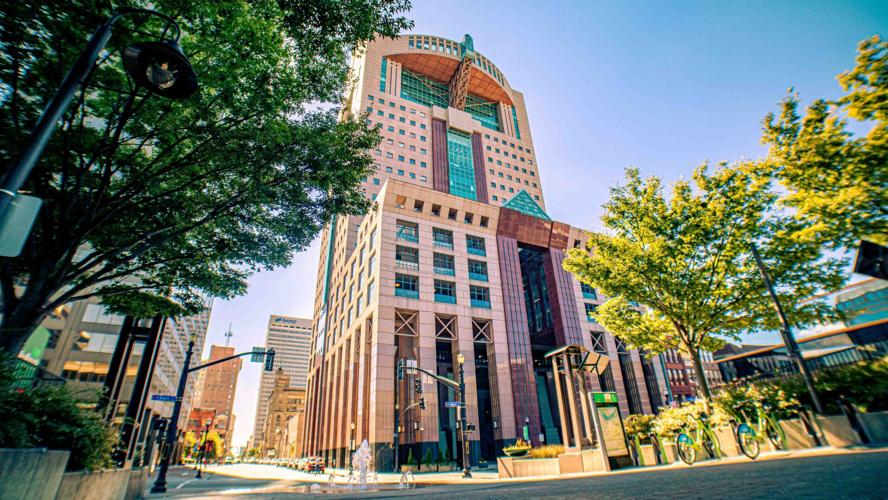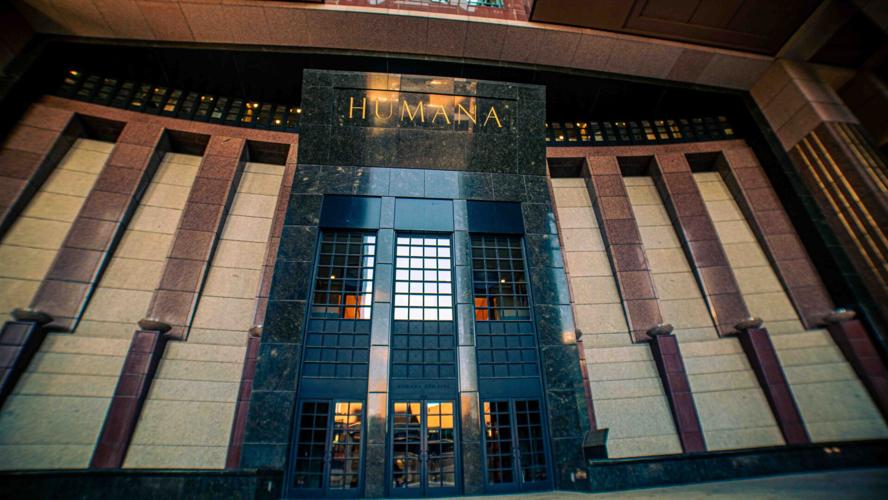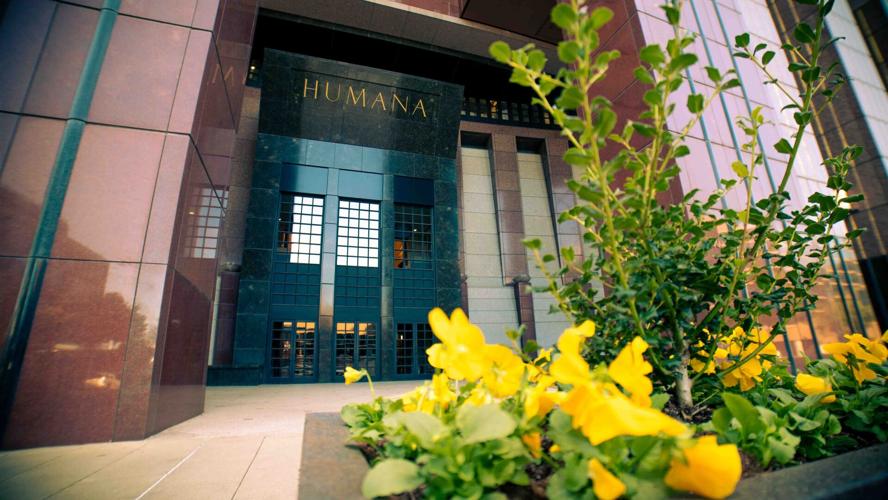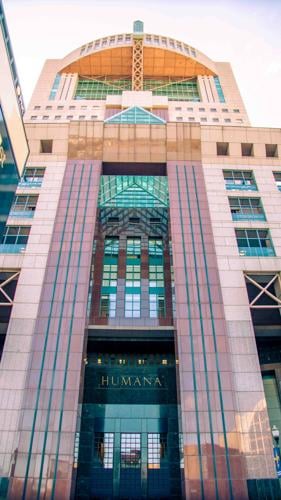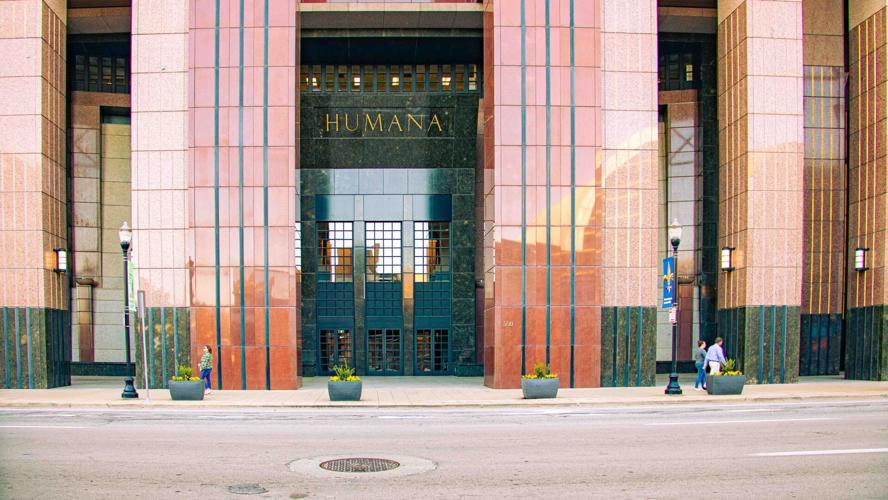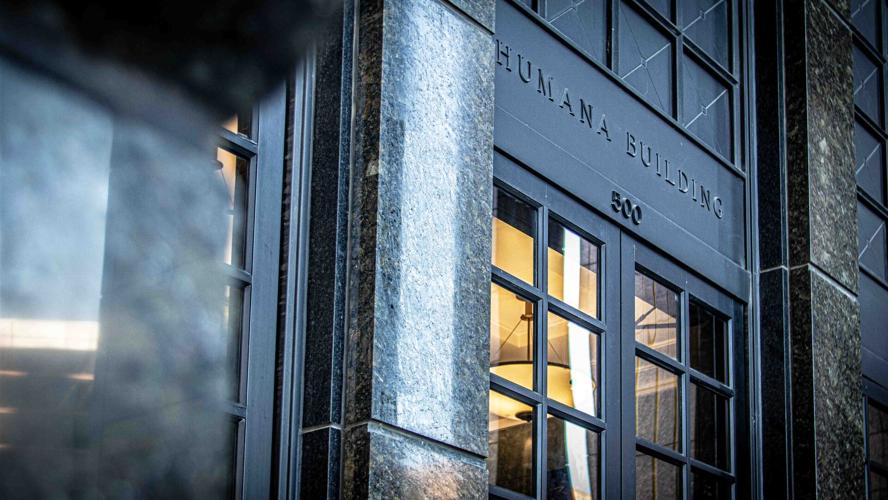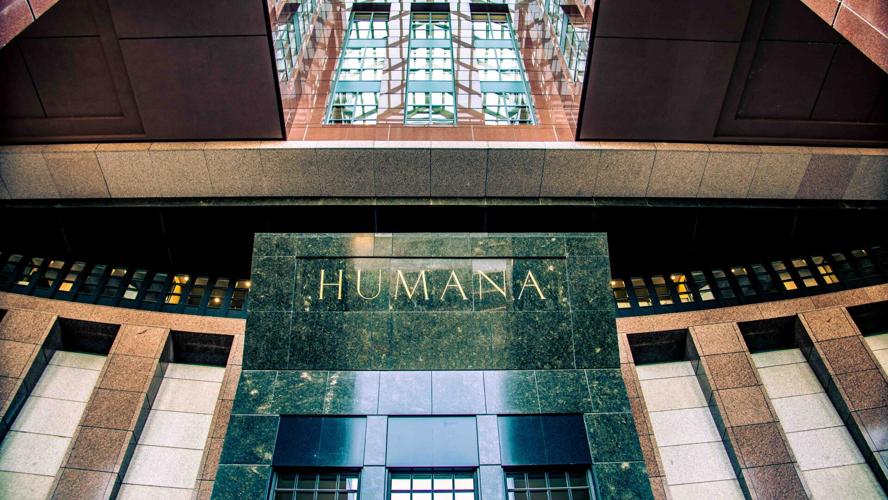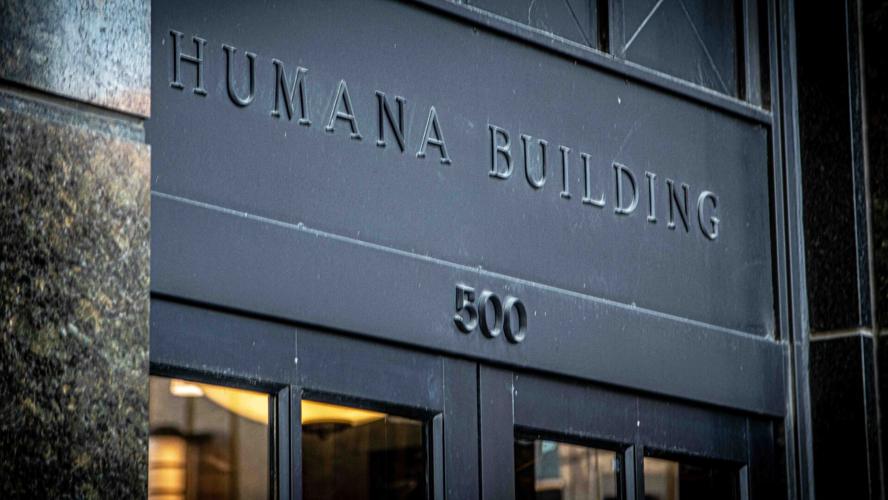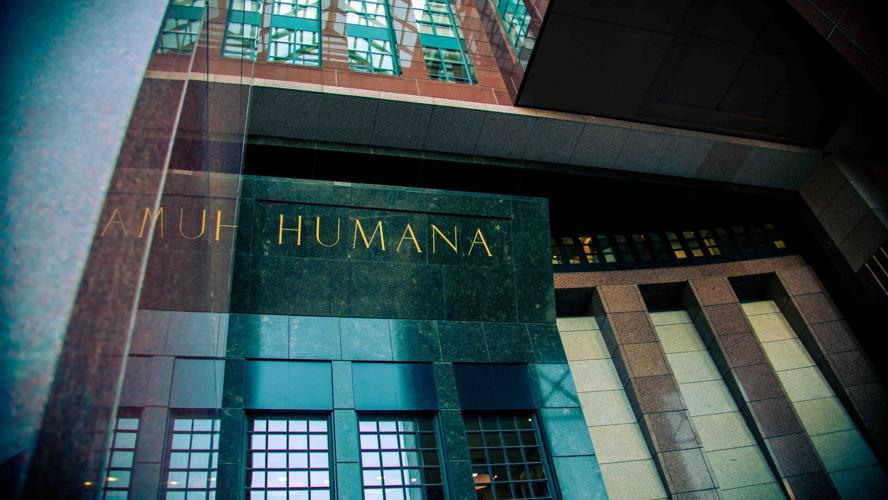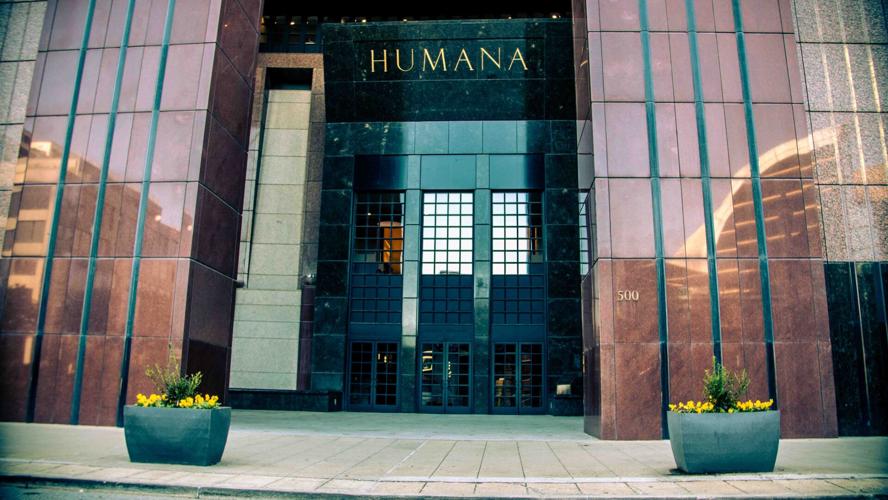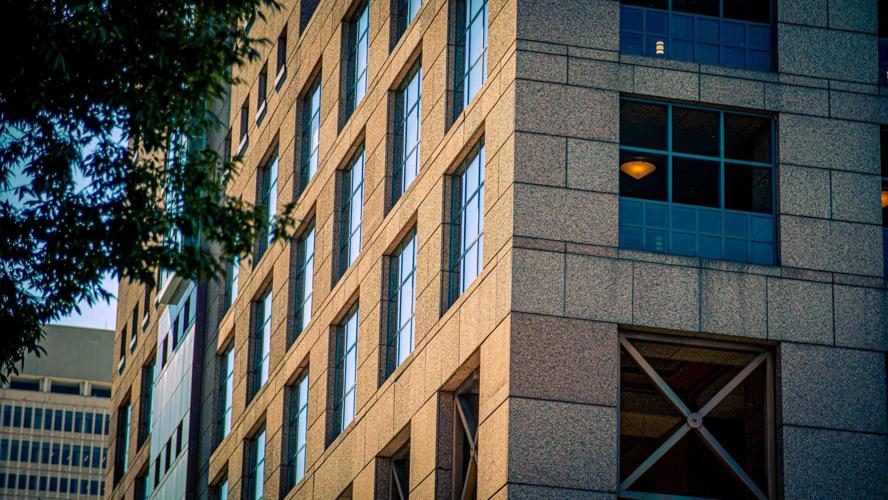LOUISVILLE, Ky. (WDRB) — Humana Inc. says it has discovered structural defects in the bowels of its nearly 40-year-old corporate headquarters in downtown Louisville, leading the health insurer to sue renowned architect Michael Graves’ firm as well as others involved in the 27-story building’s construction in the early 1980s.
A lawsuit filed Thursday in state court in Jefferson County seeks compensation for the “significant costs” Humana will incur to fix “latent defects” with the stately building at 500 W. Main Street, which was constructed from 1983 to 1985.
Humana says the building is safe to occupy, but the remedial work will take 4-5 years.
One issue, which wasn’t discovered until Humana started researching a building renovation in the fall of 2019, has to do with the welds connecting the building’s structural columns, according to the lawsuit.
It was only after Humana got behind “drywall, insulation, plumbing, electrical, and other building components” that the problematic welds were revealed, according to the complaint.
The suit names New Jersey-based Michael Graves & Associates, New York-based DeSimone Consulting Engineering Group and Louisville-based Wehr Constructors as defendants.
Graves, who died in 2015, designed the building while DeSimone served as the structural engineer and Wehr as the general contractor, according to the complaint. None of the companies immediately responded to requests for comment.
“After discovering the problems with the Building, Humana has monitored the condition of the Building to confirm that it has been and remains safe for occupancy during the four to five years it is estimated to complete remediation, and in the future as a result of the remediation itself,” Humana says in the lawsuit.
In a written statement, a Humana spokesman said the company continues to make capital improvements in the building, known as Humana Tower, and in its other downtown Louisville building known as Waterside to aid the productivity of thousands of corporate employees based in the city.
“This includes updating structural components at Humana Tower to rectify some original design, engineering, and construction issues and ensure the building’s sustainability for many years to come,” Humana spokesman Mark Taylor said. “At the same time, we are in discussions with the original architecture, structural engineering and contracting firms that led the construction of the building regarding reimbursement of the remediation costs we have incurred to address these issues.”
Graves was “one of the most prominent and prolific American architects of the latter 20th century,” according to a 2015 obituary in The New York Times.
Olon Dotson, chair of the Department of Architecture at Ball State University in Muncie, Indiana, said it was “shocking” to see a lawsuit against Graves, who was at the forefront of postmodern architecture from the late 1970s to the early 2000s.
“In my opinion the Humana building in Louisville was his finest work as an architect,” Dotson told WDRB News. “It was just a fine piece of sculpture in the postmodern style.”
Dotson said architects are often the entity with which building owners have a contractual relationship and are often necessary to sue to reach subcontractors who may be responsible for any problems.
He said all the businesses involved in the construction of Humana Tower likely have professional liability insurance, but it’s unclear whether those policies are still in effect four decades later.
“What are the statute of limitations on that coverage? This is a very litigious society; everybody is going to be pointing fingers,” he said.
Humana discovered the problems in 2019 when it began looking into a renovation, according the lawsuit.
The company was interested in converting the 8th floor terrace of the podium that extends from the main structure toward Main Street into an “occupied greenspace.”
In evaluating whether the podium could support the greenspace, Humana discovered that the “demand capacity ratio of various supporting structures (of the podium) were found to exceed the limit imposed by the building code and professional standards.”
After abandoning the renovation idea, Humana looked into the main tower and discovered that it also had unacceptable demand capacity ratios.
“Exposing the hidden structural steel columns in the Tower unexpectedly revealed that the connections between columns were welded in a manner that violated professional and industry construction standards and the applicable building code now and at the time of construction,” the lawsuit claims. “Among other issues, of the column connections inspected, it was found that web-to-web welds were not installed as required, and flange-to-flange welds were found to be insufficient.”
